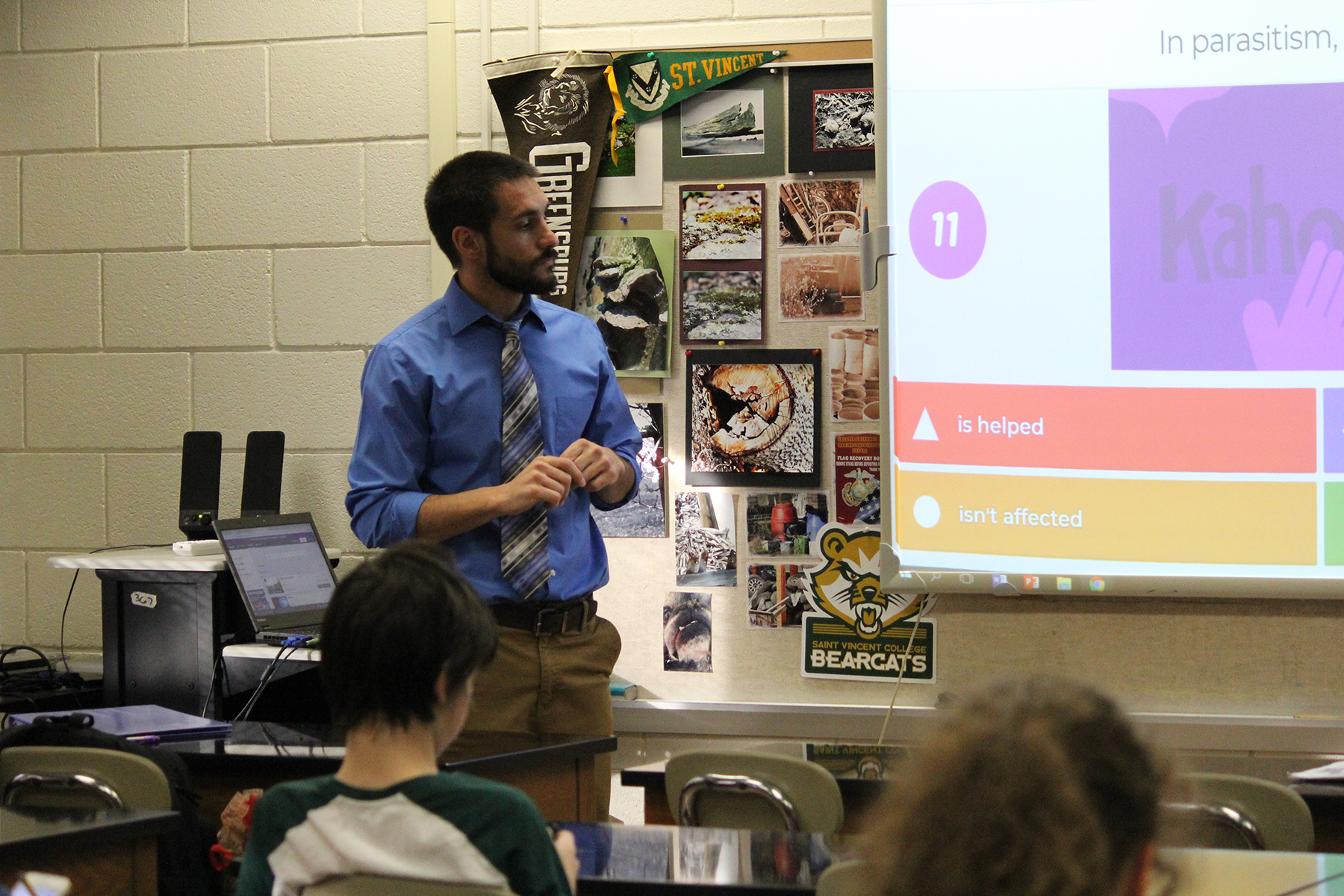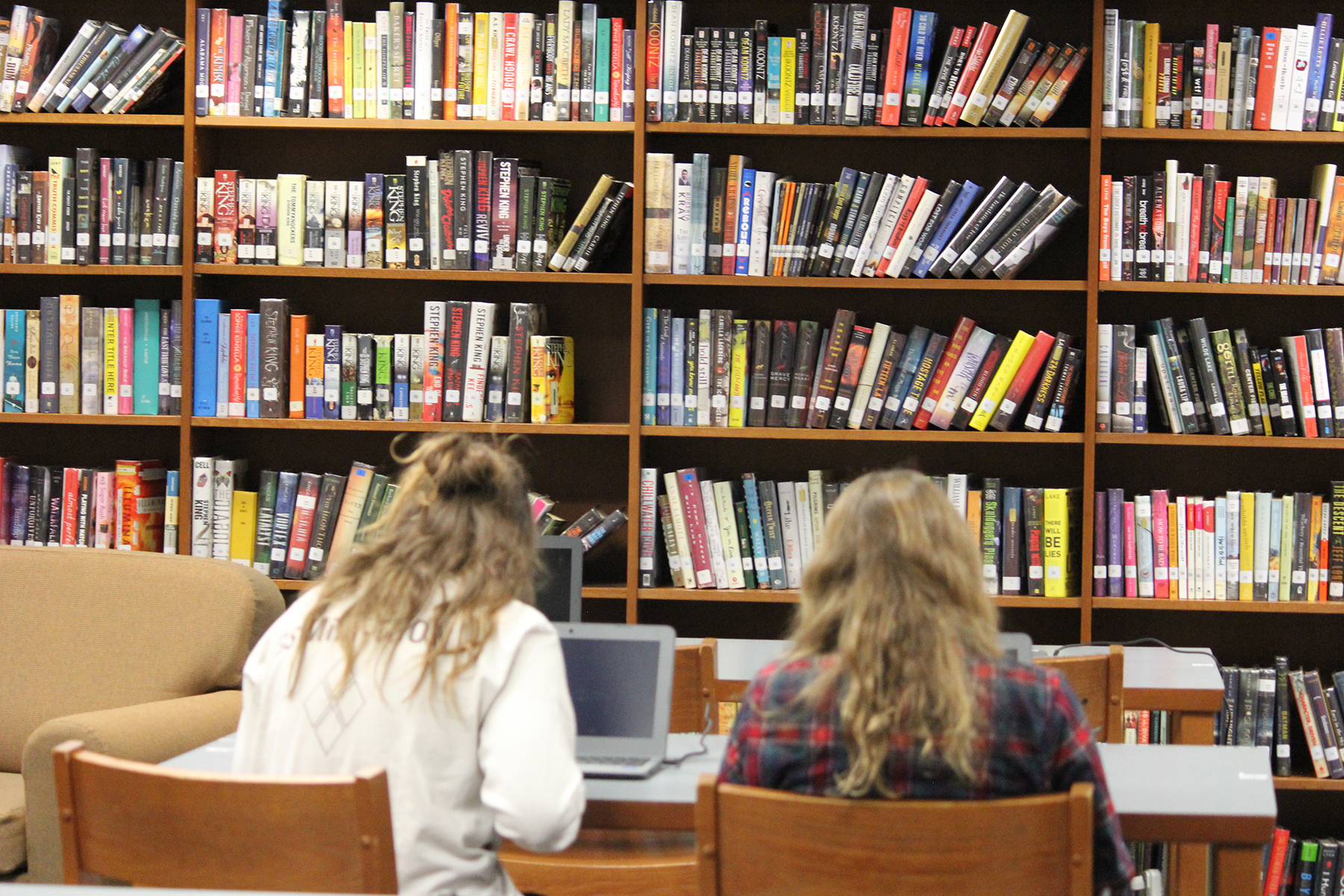Teaching and Learning
Teachers across the country work second jobs and it’s a combination of salaries and financial situations.
A career in teaching is a passion for many people and having one great teacher can be life-changing; this makes it especially shocking to hear that one in five teachers work second jobs according to Education Week.
“I work many jobs – some are with the school district and some are not with the school district,” math teacher Mrs. Christine Burkhart explained. “I’m a single mom so I come from a single income household and I have two children in college right now.”
Thankfully, Burkhart’s teaching career has not caused any conflict with part-time jobs which include retail, SAT proctoring and working detention.
“Most people for part time jobs are looking for people who are willing to work, they show up on time and they have some availability,” she said.
However, she does admit to there being occasional strange moments if she happens to work with students.
“I’ve had former students that are technically ahead of me so I’m going to former students and asking, ‘Hey, how do I return this item?’ or ‘Hey, how do I find this item?’” she said. “I wouldn’t say it’s a problem, it’s just odd.”
Though she’s able to manage working multiple jobs, it can take a toll on anyone.
“I think it makes it hard on the teachers because during Christmas time when I’m working a lot at my other part-time job, it becomes, you know you’re tired, we get worn down and sick,” she said. “I understand why teachers have to do it, but it’s hard.”

However, there are many factors that go in to education finances apart from teacher salaries, including millage rates. A millage rate is the amount of tax on $1,000 of property value. Schools use millage rates to calculate a budget and the current rate in Greensburg is 88.22 for schools. This means for every $1,000, there are about $88 in taxes.
“I see all sides,” she said. “I actually think our tax system should almost be changed. I think it [the finances] should be discussed because I don’t know that a lot of people understand that the tax base in Greensburg is becoming smaller and smaller. Seton Hill is buying up a lot of property and they don’t pay taxes. Excela Health, the churches – they don’t pay property taxes. Our tax base is being taken down and I don’t think a lot of people know that. I also don’t think people really understand what a mil is. When it gets written in the paper that a school district is raising their millage by two mils, people get upset, but when you actually try to figure out what a mil is, it’s not an awful amount of money.”
Burkhart also recounted the hiring process and three interviews she went through to eventually be hired at GS.
“Back in 2001 things were a little bit different,” she said. “There was a little bit more money in the schools and [it was difficult to get a long-term teaching job because] there weren’t a lot of openings in the school districts. Now when teachers are leaving they’re not hiring for that position so that makes it more difficult now for them.”
Though there are discrepancies in how much a teacher should be paid, it can also be situation-dependent.
“I don’t know that I will continue working two jobs,” she said. “I’m doing it because for two years, I have two kids in college continuously which is just a big burden. I don’t want to go in to a lot of debt so I’m trying to do these jobs so I don’t go in to debt. Will I continue working all these extra jobs after two more years when my son graduates? Probably not.”
Nevertheless, being a teacher is still extremely valuable to her.
“Being inside the classroom actually doing the teaching, I absolutely love it,” she said. “I absolutely love teaching, I love that part of the job. There’s nothing better than that.”
New hire Mr. Angelo Testa also recounted his interview process and while he doesn’t work a second job during the school year, he does things over the summer to make a little extra money.
“I guess you could say that compared to other careers, teachers might make less on the average compared to other professions,” Testa said. “[It] might be because of the teacher’s schedule. They do have summers where they could pick up another job or free evenings.”
Statistically, teachers are the ones who are more likely to work second jobs than other career paths as reported by Dick Startz, an Economics professor at the University of California.
“The simple solution would be to increase pay,” Testa said. “If teachers were paid more money then I guess there would not be a need to work second jobs. It’s tough because then you’re affecting the entire Greensburg community because you’re increasing wages for teachers and you have to increase taxes. The school only gets so much money, so it’s tough.”
However, for the teachers at GS, passion will always be more important.

“Not just teaching but teaching science was my main goal,” Testa said. “Because I like science and because I’m so passionate about science, teaching other people about it and getting them to like it as well is why I wanted to do it.”
That passion extends outside of the seven hours inside the walls of GS.
“The scope of a teacher’s job goes beyond the recognized school day,” school board member Mrs. Lynna Thomas said. “Most of the teachers I know devote many hours outside of the classroom – grading papers, putting lessons and assignments together, organizing materials as well as working on professional development and learning so they can continue to stay current on the knowledge in the field.”
Having worked more than one job herself, Thomas understands how difficult it can sometimes be.
“I know that it can be mentally and physically tiring to do so,” Thomas said. “While I don’t believe it would necessarily affect their passion for teaching, I think it could affect the time, energy and focus a teacher needs to perform at their very best.”
From her perspective, the solution is more than just increasing pay.
“To me, it is not a question of agreeing that salaries should be greater, it is a question of how to find ways to better fund public education so that we do not create such a burden on local taxpayers,” she said.
She believes that in addition to reforming salaries, teachers could be supported more by encouraging professional growth, listening to their input and placing more value on education overall.
“It is important to have state and federal support to improve teacher salaries for all teachers in all districts so that we can get closer to paying them what they deserve,” she said. “Right now teachers working in poorer districts are doing the hard work of dealing with students who have many struggles and needs, while having fewer resources available and getting paid less for the work that they are doing. This is not right. There should not be such great discrepancies between poor districts and rich districts.”
As an integral part of the community, teachers do much more than just teach the curriculum.
“I think that our society on the whole does not fully understand or value the work that teachers do,” she said. “We entrust teachers to care for our children, to keep them safe, to educate them so that they can become productive members of our communities and care for us in the future. We hold them accountable for students’ social, emotional, moral and intellectual growth.”









